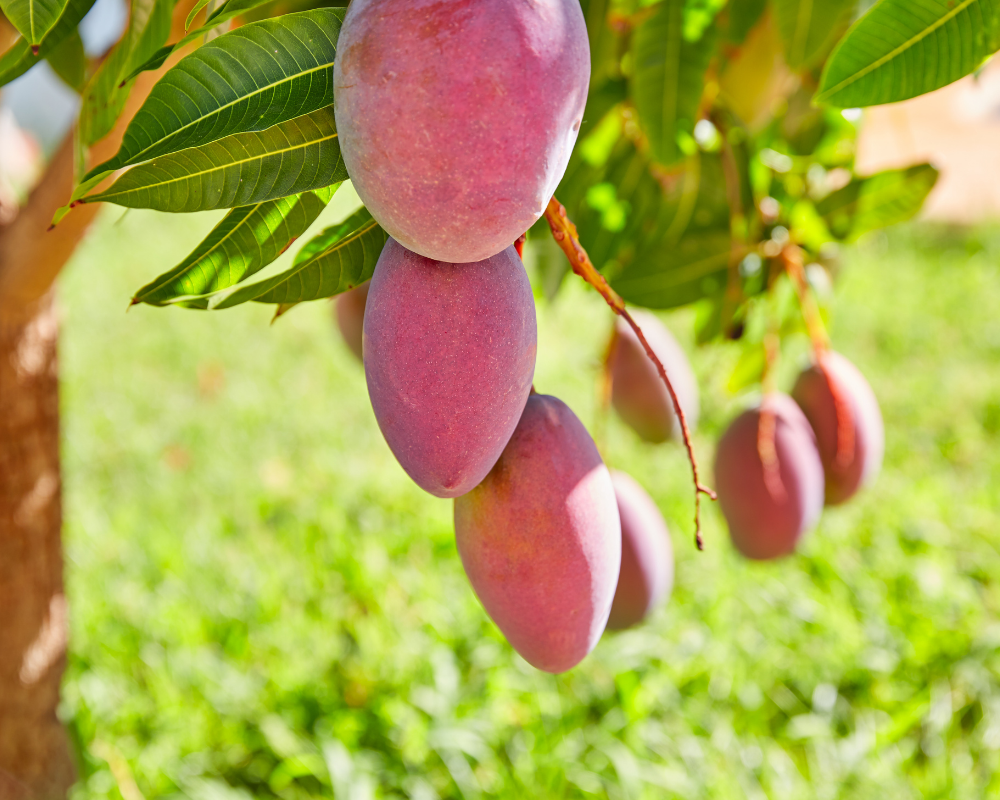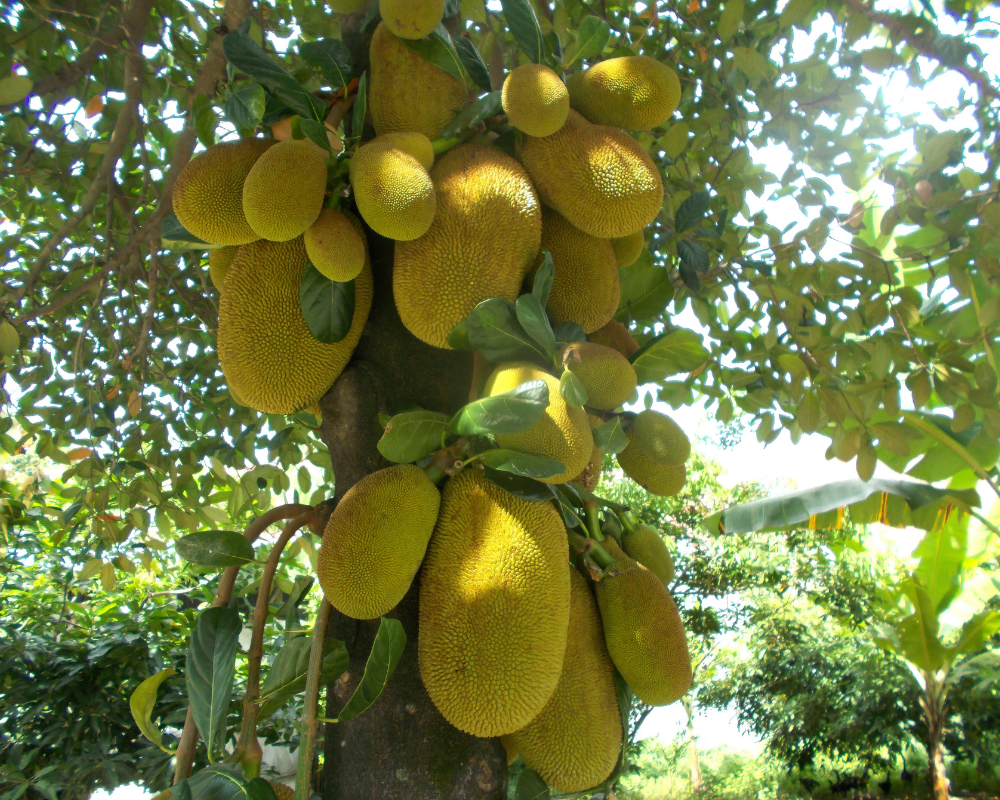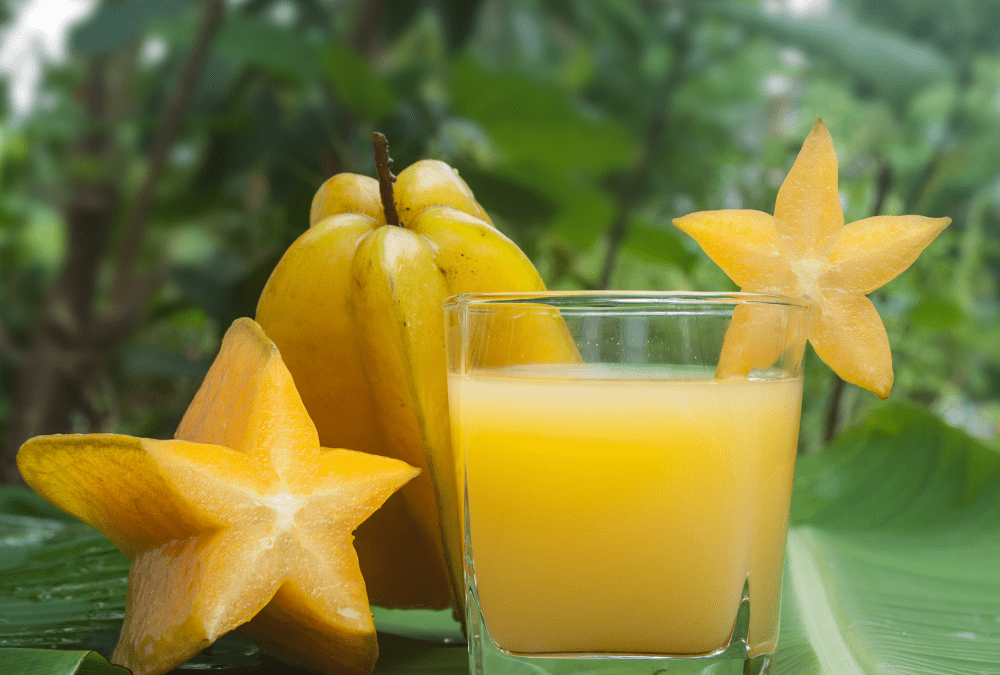The time of year has come when our tropical fruit shipment has arrived. Both of our Rainbow Gardens locations recently brought in your favorite tropical fruit tree varieties like: Mango, Papaya, Avocado, Dragon Fruit, Guava, Banana, Pineapple, Star Fruit and more. You can also find more unique tropical fruit varieties like: Black Pepper, Jackfruit, Jaboticaba, Sugar Apple, Sapodilla, Pitomba, Wax Jambu, and other tantalizing offers. Will this be the year you try growing a tropical fruit tree? Today’s blog is here to offer you a few planting basics, but the rate of your success relies on thoroughly researching the tropical fruit of your choice.

(Papaya)
Growing Requirements for Tropical Fruit Trees
Time to Plant Tropical Fruit: Unlike hardy fruit trees, that are best planted in winter, tropical fruit should be planted once the possibility of a late spring freeze has passed. However, while tropical trees do need warmth to thrive, you are still best off planting them before the heat of the summer rages in. If you are looking to plant a tropical fruit this year, don’t delay much longer, or plan to spend extra time making sure your tree can survive its first summer.
Where to Plant Tropical Fruit: For the most part, you are going to plant your tropical fruit in the warmest area of your landscape. This typically tends to be on the south side of your house, where it is warmest and where you will also receive protection from damaging northern winds. (Speaking of winds, can I just remind everybody that when you are purchasing and bringing home trees from the nursery, you need to wrap them with some cloth or plastic so that they do not get windburned on your drive home? Just needed to insert that in here.)
Most tropical fruit like full sun (though there are exceptions to the rule, ie. gingers), but some will still appreciate a little bit of afternoon shade in the hottest part of the afternoon. The most important thing to do is research the preference of each plant you desire to purchase! Follow the same tree planting instructions you will find here, and make sure that the area you plan to plant in has soil that drains well. Creating a berm with mulch can help to retain the moisture in the soil around the roots of your trees and also help with protecting the roots through winter. Just make sure you aren’t piling the mulch up against the trunk of the tree!

(Mango)
Watering Tropical Fruit: Your tropical fruit tree will need to be watered more frequently at the beginning of planting then during the maintenance phase. Once established, the key to watering is deep, infrequent watering to allow the trees to get used to relying on natural rainfall. Deep watering also helps push salts from the soil away from the roots of tropicals which tend to be sensitive to salts.
In San Antonio, we often go through periods of drought. You will need to adjust your watering schedule to the weather. Watering isn’t a simple one and done answer. You will need to learn your watering needs based on: size and type of plant, soil type, weather and season. Research the needs of your tropical fruit tree!
Another thing to keep in mind when watering and fertilizing (more below) tropical fruit trees is that as they get established, your watering and fertilizing needs to extend to the area below the entire width of the canopy of your tree. This is where feeder roots are developed and those are what directly take up the moisture and nutrients.

Feeding Tropical Fruit: At planting, the only fertilizer you should think about offering is perhaps a little bit of liquid seaweed. Let your tropical fruit get established before really embarking on a feeding regiment. You can begin a fertilization program after it has gone through its first summer or first year of being planted, especially if you are going to use a chemical fertilizer. (It is also advised to avoid heavy fertilization when blossoms develop as that could push new growth and result in blossom drop.) Compost can be used at any point.
Quit feeding tropical fruit in early fall. Late fertilizer applications will only encourage new growth that will be more susceptible to damage by frost. Resume a monthly fertilizing program the following year from mid February to about September.
Protecting Tropical Fruit: One of the most important things to know about growing tropical fruit is that they are NOT cold hardy. Although we generally have mild winters here in San Antonio, we still have those wayward years where we are surprised by a snow or ice storm (Snovid, anyone?). Plus, even if our freezes don’t generally stay around for long periods of time, one is all it takes to damage many tropical fruits. Winter protection will be imperative for the vitality of your tropicals. Follow our winter protection tips you will find here.
I hope this has given you a little insight as to what is required for growing tropical fruit here in San Antonio. If you are interested in any of the varieties we currently are carrying, I would advise you to research that particular type of fruit and learn all you can about growing them, quicky… our supply sells fast! Search sites like TAMU Agrilife Extension Service that will have info tailored to our area.
~The Happy Gardener, Lisa Mulroy


Trackbacks/Pingbacks